Choosing an MFP with Wi-Fi
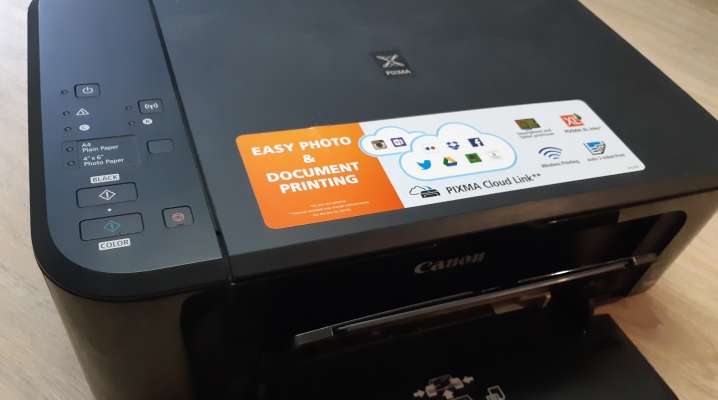
Multifunctional devices are the most convenient and much more practical thing than conventional printers. And the size of the occupied space, in contrast to the use of certain types of office equipment, will be much less. But you need to know how to choose the right MFP with Wi-Fi, what you should focus on.
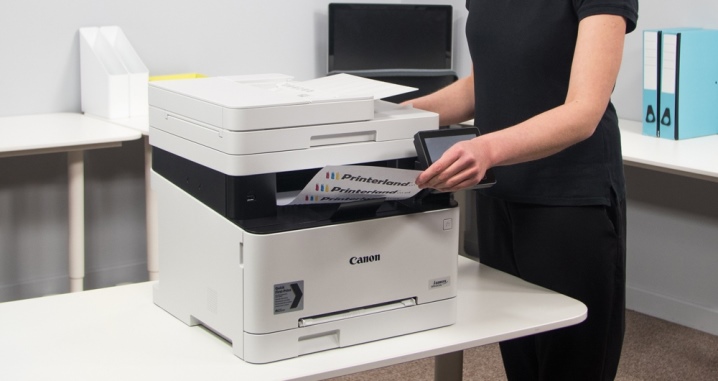
Peculiarities
First of all, it is worth pointing out that A Wi-Fi MFP differs from a regular printer in more than just the fact that it can be done without wires, as is often thought. With the current state of the art, the stability of wireless communications is quite high. But before you pay for such devices, you need to figure out whether they are really useful or not.
You can put your wireless MFPs anywhere you want. Even where it is impossible or extremely inconvenient to stretch the wires.
Cables are, of course, considered a reliable and familiar solution. However, they are very uncomfortable and uncomfortable. It is easy to trip over the wires, knock over and break an expensive device, or even get yourself injured. Stretched cables can be easily damaged and difficult to notice. The elimination of the cable connection improves the aesthetics of the workplace.
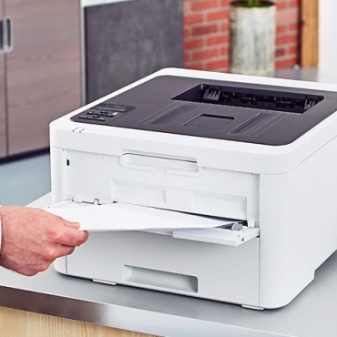
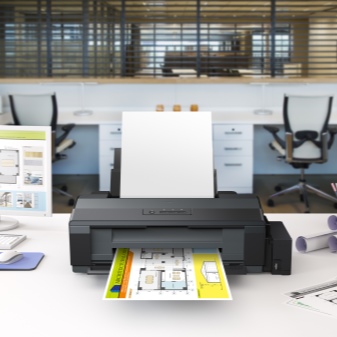
Moreover, in some cases a wireless connection turns out to be the only option - for example, connecting to a laptop or to a loaded PC (all connectors of which are occupied) is the only way to be done. It is quite logical to use Wi-Fi also where documents will often be sent to print from smartphones or tablets. This circumstance is important for home use. In offices, wireless protocols are appealing for their speed and ease of use. But in purely technical terms, wireless printing equipment does not represent anything special.
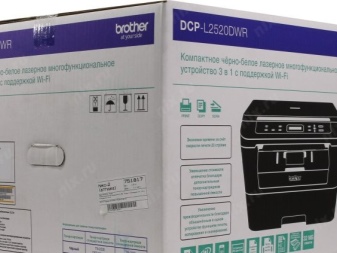
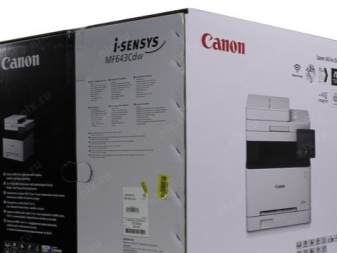
Of the minuses, it is worth noting:
- the need to constantly walk to the installed device;
- additional vulnerability in terms of data security and reliability;
- increased price (traditional wired models are cheaper).
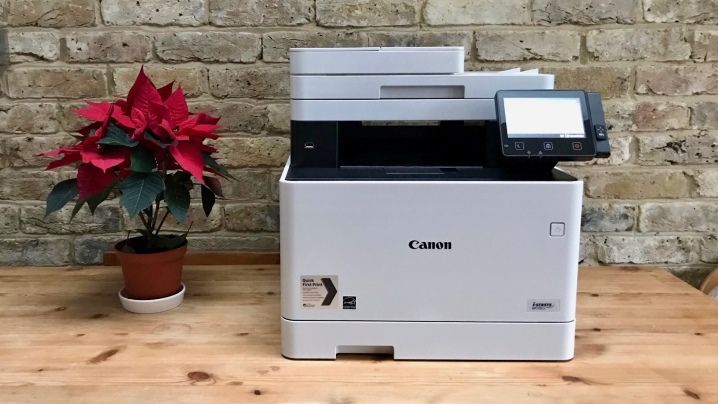
Manufacturers and their models
Good examples of black and white laser MFPs are supplied by Brother. In this regard, it is worth noting the model DCP-L2520DWR, designed for printing A4 sheets. The maximum print speed can be up to 26 pages per minute. The level of optical resolution is 2400x600 pixels per inch.
The designers also provided for the presence of a USB port, so a failure in the radio module, if this happens, should not paralyze the work.
The main technical features are as follows:
- desktop installation;
- display with 2 lines of 16 characters;
- warming up in 9 seconds;
- prints the start page in 8.5 seconds;
- the ability to use automatic two-sided printing as standard;
- scanning resolution - 2400x600 dpi;
- scanning resolution raised by algorithms - up to 19200x19200 dots per inch;
- copying at a speed of up to 26 pages per minute;
- option to send images by email;
- work with paper with a density of 0.6 to 0.163 kg per 1 sq. m;
- 250-sheet paper feed tray;
- processor with a clock frequency of 266 MHz;
- RAM - 32 MB;
- weight - 9.7 kg.
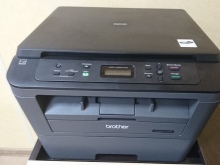
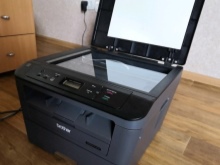
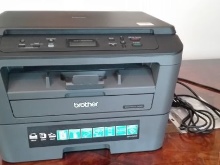
If you need to choose a color MFP, then you should take a closer look at the models from the more famous Canon company. A convenient example would be i-Sensys Color MF643Cdw. This MFP works with 4 different color cartridges and can print in both color and monochrome at up to 21 pages per minute. The presence of the RJ-45 interface is provided. There is also an AirPrint feature.
Important nuances:
- 5-inch display;
- warming up in 13 seconds;
- resolution in monochrome and color - up to 600x600 pixels;
- the ability to print on glossy paper, cards and envelopes;
- pretty decent photo output;
- permissible monthly load - 30 thousand pages;
- scanning by CIS technology.
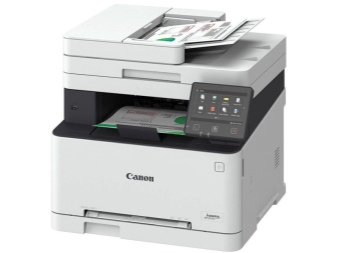
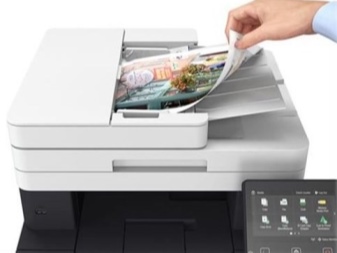
Also noteworthy are inkjet versions with CISS. In this series, stands out Canon MAXIFY MB5140. Such a device works fast enough and saves energy. Users note that this is also a particularly compact device.
There is only one obvious drawback - you will need to apply for the purchase of ink on the Internet.
Technical specifications:
- prints 24 images per minute in monochrome and 15.5 images in color;
- the ability to scan images to cloud services or email messages;
- paper cassette for 250 sheets;
- print resolution - up to 600x1200 pixels;
- 2 CIS sensors;
- scanning color 24 or 48 bits in one pass;
- up to 99 copies in one pass.


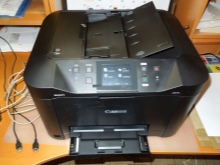
Black and white inkjet MFPs are rare. A pleasant example may be Epson M2140. This device uses fast drying pigment ink. The print resolution reaches 1200x2400 pixels, and its speed is 39 pages per minute. Provides CISS, output tray for 100 sheets, the ability to print on envelopes.
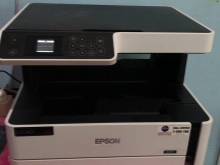

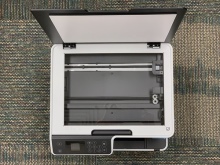
How to choose?
To buy the best multifunctional device with Wi-Fi and additional features for your home, it is imperative to pay attention to the cost of the printing procedure. Those who print something occasionally will be satisfied with almost any model, except for the frankly junk samples. But for office use, you need to choose a model with fairly cheap original ink. Or clarify if custom cartridges can be used. Having dealt with the operating costs, you need to move on to the quality of the device.
And here the print resolution turns out to be the best guideline. It is especially important for those who will often display photographs and drawings. Don't forget about copying, scanning and sending faxes, too. It should be borne in mind that inkjet printers are better at handling photographs than laser printers, but they are less resistant to significant loads when printing text. And the fact that with a long inactivity, the ink in an inkjet printer inevitably dries up.

Print speed, contrary to popular myth, is not only important in the office. When used at home, every extra second will gradually take up a lot of time.
Therefore, it is worth considering seriously only the versions that print on paper, scan or copy at least 20 sheets per minute. It is very useful to have an additional Bluetooth interface that allows you to connect to mobile devices remotely.
Here are some more relevant criteria:
- size (whether it will be possible to put on a specific place);
- monthly productivity (for those who are going to print a lot);
- paper tray capacity;
- the presence of authorization (will help to strengthen the security of personal information);
- print format (A4 is better for home, A3 for office);
- reviews of a particular model, of course.
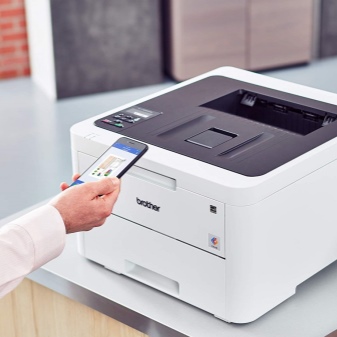
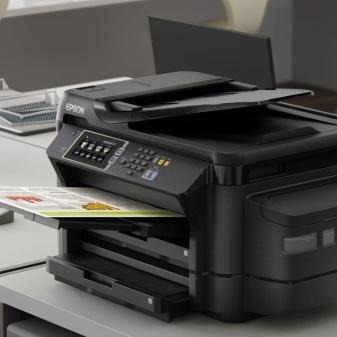
How to connect?
Connecting to a computer or laptop via Wi-Fi is quite simple. To do this, you just need to integrate the device into a wireless network. Then add a wireless printer in the appropriate section of the control panel. Drivers are usually installed automatically, and in a few minutes everything is ready to go.
It is worth considering that when setting up a network on an MFP, you will have to specify the network encryption password - and you need to keep it ready.

In some cases, it is more convenient to connect the MFP through a router. The connection between the devices themselves is sometimes well provided by a USB cable. But before connecting in this way, both devices must be turned off. Then they first turn on the router and only when it is fully loaded do they start the MFP. Next, you should enter the address 168.0.1 or another combination specified in the documentation for the router.
The data for logging into the network should also be looked at in the documentation. But in most cases it is enough to drive the word "admin" into both lines.Then you will need to get into the network map. It contains a list of all devices connected to the router. If there is no printer among them, you need to carefully go through the entire chain again; if everything is correct, but there is no result - alas, only a specialist will help.
But modern MFPs can connect to routers directly, without the help of wires. Sometimes you just need to press the WPS button on the router itself. Contact should be established within 2 minutes. There is another way - use the network settings of the MFP. True, here you will already need to use a password.

The following is a video review of the Brother DCP-L2520DWR MFP with Wi-Fi.













The comment was sent successfully.